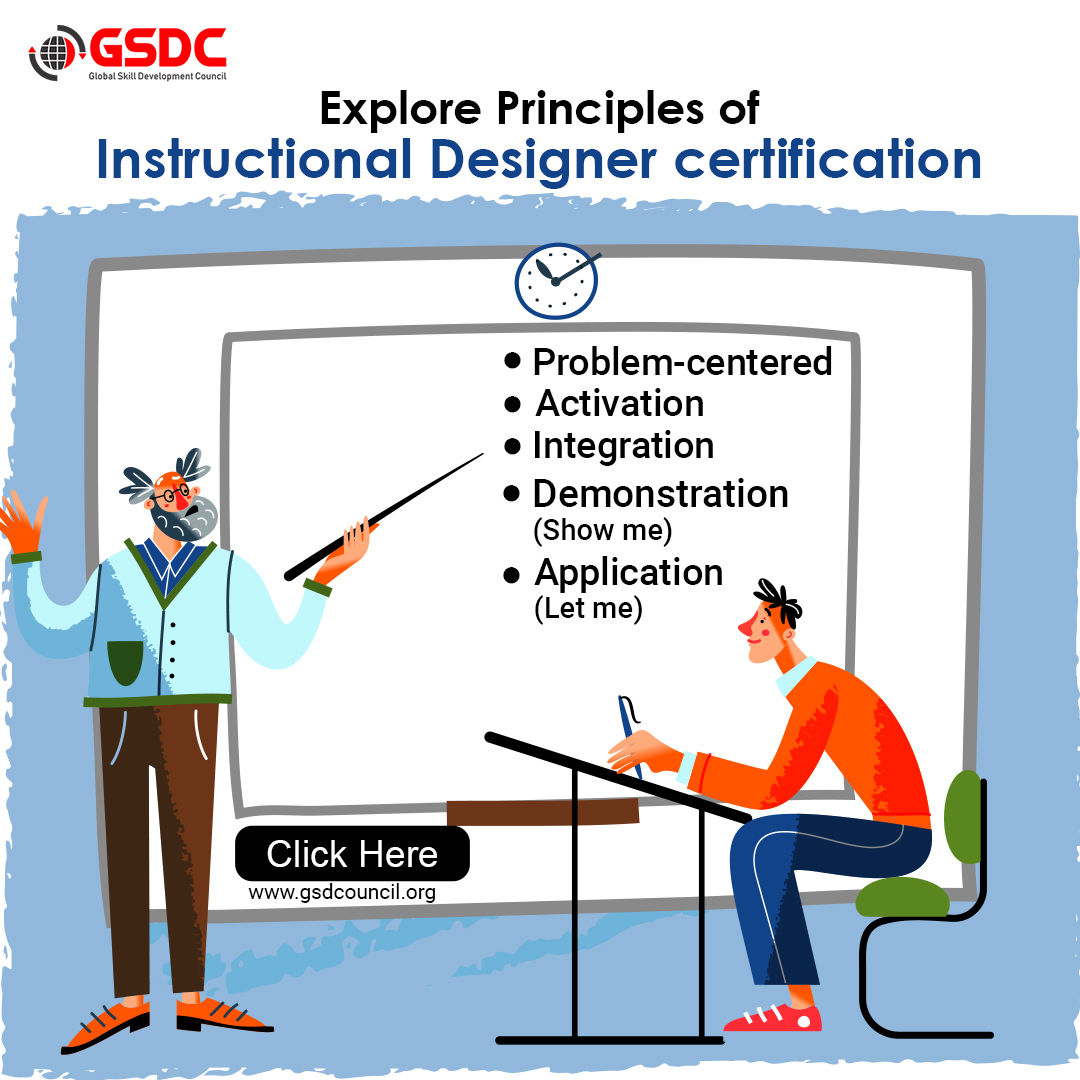An Instructional Designer certification is a document attesting to a person's expertise in the field of instructional design. Developing useful and interesting learning resources and experiences is a methodical process known as instructional design. It includes conducting a needs analysis, creating instructional techniques, creating content, and assessing how well instructional materials work.
Instructional Designer certification indicates that a person is well-versed in the methodology, best practices, and concepts of instructional design. This suggests that they have obtained the essential knowledge and abilities to create and implement successful learning programs in a variety of fields and sectors.
The principles you've mentioned align with the ADDIE instructional design model, a widely used framework in the field of instructional design. Each principle represents a phase or aspect within this model. Let's delve into how these principles relate to the ADDIE model:

Problem-centered:
At the Analysis phase of the ADDIE model, instructional designers identify the problem or learning need. This phase involves conducting a thorough needs assessment to understand the gap between the current state of learning and the desired objectives.
Activation:
In the Design phase of ADDIE, activation refers to engaging learners' prior knowledge or experiences related to the subject matter. It involves designing activities or introductions that stimulate interest and create a foundation for new learning.
Demonstration (Show me):
This principle aligns with the Development phase of ADDIE. In this phase, instructional designers create learning materials that demonstrate the desired skills or knowledge to learners. This might include videos, simulations, or examples that showcase the required competencies.
Application (Let me):
Application is linked to the Implementation phase of ADDIE. Here, learners are provided opportunities to apply the newly acquired knowledge or skills. It involves activities, exercises, or scenarios that enable learners to practice and implement what they've learned.
Integration:
Integration occurs during the Evaluation phase of ADDIE. It refers to the process of assessing how well the newly acquired knowledge or skills integrate into the learners' existing knowledge or behaviour. Evaluation methods are used to measure the effectiveness of the instructional design and its impact on learners' performance.
These principles are essential considerations in the instructional design process, aligning with different stages of ADDIE. They guide instructional designers in creating effective learning experiences that focus on addressing specific learning needs, engaging learners, demonstrating concepts, providing opportunities for practice, and evaluating the effectiveness of the instruction. Integrating these principles into the instructional design process ensures a learner-centered approach that fosters understanding, retention, and application of knowledge or skills.


No comments yet